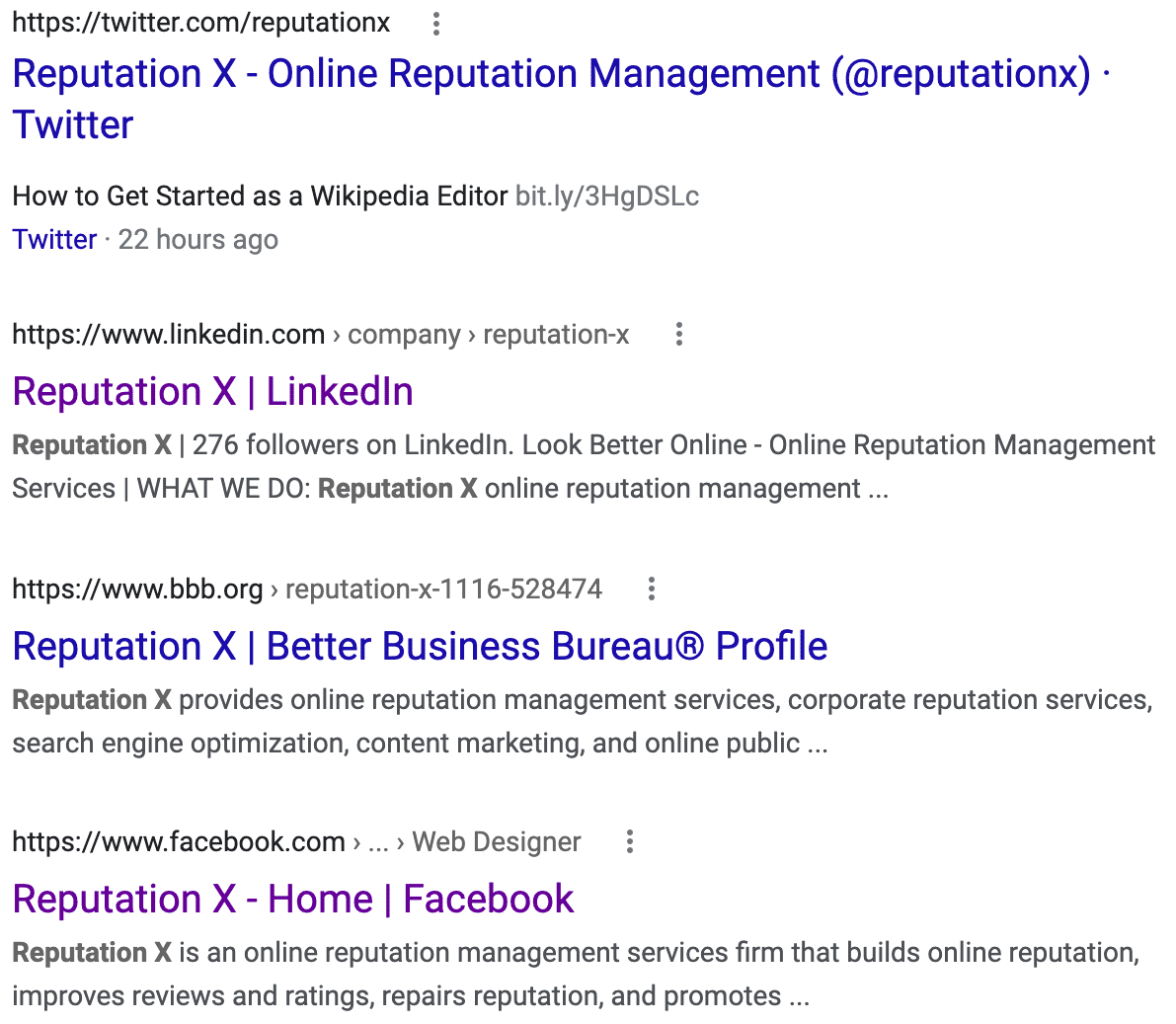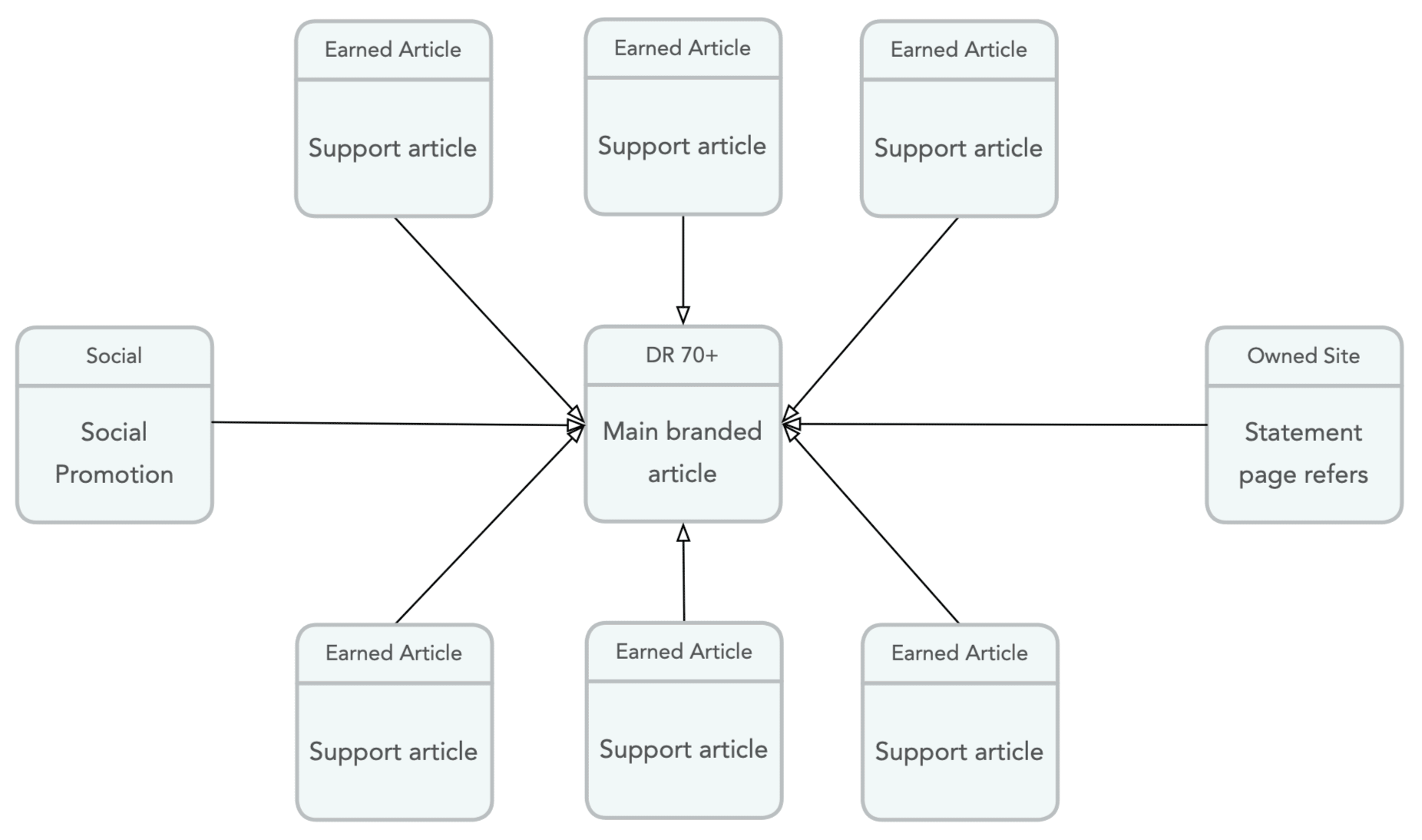How to Help PR Content Rank Online ? Tips and Tricks
Most PR content does not perform well in search results. This article will help fix that problem.
Reputation X does not call up the New York Times and ask for content to be created; if we did so, we could inadvertently become the story. Instead, we work with and often through PR professionals for that aspect of online reputation management when needed. Here are some tips we provide PR pros we work with to amplify content we direct PR agencies to place for our clients.
Press releases don’t last long on Google
Press releases are usually not very effective for online reputation management because they generally do not last long in search results. Generally, press releases rise, then they fall in Google. Press releases are like fresh vegetables in the sun – they have a short shelf life. Press releases are intended to grab the timely attention of journalists and bloggers and provide the basis for their work. The work of journalists and bloggers tends to last far longer in search results than press releases do.
Press releases are not useless.
Bloggers and journalists often use press releases to inform them of topical content. The use of press releases should be used in tandem with other more permanent types of contact, but should not be relied upon alone.
We call this content environment the hub and spoke model.
Press releases shouldn’t just link to the clients’ site
When PR pros create a press release, they most often link from the release to the client’s website. This makes sense, but it doesn’t help the client’s online reputation because the client’s website probably already ranks well for their branded search phrase.
The best online reputation best practice in this case is to link to the client’s website as usual, but also link to other positive online content.
Why link to sites other than the main one
If a press release links to other third-party information that is both relevant and whose sentiment would be considered positive, the press release will help to channel Google search authority to those positive third-party publications about the client. This can help those other publications to be amplified in search results, causing the good stuff to rise.
For example, if a client has negative online content they want to be suppressed, and search results exist below the negative that are themselves positive, link from the press release to those positives below the negative.
Now that you think about it it seems obvious, doesn’t it?
Press releases should be compelling
One of the most effective methods for improving one’s online reputation is to generate powerful positive online content about the subject. But finding a compelling story that journalists, bloggers, social media creators, and others are willing to pick up and amplify is tough. That’s why we always counsel our clients to lead with a great story.
Search and social have indelibly changed the business model of online information. Sadly it’s no longer about truth; it’s about clicks. “Dog bites man” isn’t a story, but “Man bites dog is.” The latter headline will get far more attention than the former. Keep that in mind.
Often times, a compelling story needs to be created from scratch. Don’t lie, but do dig deep and get creative. A creative and compelling story can have 100 times the positive effect on search results compared to a less compelling story. If you have the opportunity to wave your magic clickbait wand over the headline, it can help.
At the end of the day, PR is great for generating content, but only if there’s a reason for content creators to pick it up.
Put the search phrase in the headline, and make it compelling
One of the most powerful things PR professionals can do is to get the branded search phrase of the client into the headline. This can’t always be controlled, but when it can it often makes all the difference for the online visibility of content.
Look at the screenshot below and notice how every first-page ranking item contains the search phrase “reputation x” in the headline. This isn’t always the case, but it’s a good rule of thumb.
Get placements on powerful industry-specific publications
Where content is placed can be just as important as how compelling the story itself is.
Well-known publications like the Washington Post are fantastic if you can get them to write something wonderful. But it will usually be far easier to be published on second or even third-tier online publications. These are often the publications that you should strive for because they’re not only easier to get into, but you can get five or ten pieces generated from one angle placed on myriad sources for about the same level of effort to get one big-time article (if you even can).
For example, if a client is in the insurance business, then it makes perfect sense to try to get coverage in a publication specifically designed around that type of content. One that pops to mind is Insurance Journal. This kind of niche content is perfect for most professional clientele because it’s relevant to their business.
These types of publications are also more lenient when it comes to content control and the embedding of relevant links within the content. As with the press release mentioned above, this content should contain links to positive content that would benefit from higher visibility.
Finally, relevant and powerful industry publications may give you more control over your headline, so you can get that all-important search phrase laden headline.
Generate referential content to supplement the main piece
You can think of this as a hub and spoke model. The primary content is at the center of the wheel while secondary content that references the primary contact is at the end of each spoke.
Illustration of the hub and spoke content model
How the model works
- In the middle of the above illustration the main branded article is on a very strong site (in the illustration, it is an article on a site with a Domain Rating (DR) of 70 or better.
- On the left, you will see social promotion consisting of multiple social messaging types over time (not just once).
- Then you’ll see Earned Articles that are on less powerful sites. Those articles should have in-content links to the main branded article. These links lend authority to the main article, and may also rank themselves.
- Finally, on the right, you will see the owned site link. This is a link from the main site controlled (owned) by the brand to the main article in the center.
In this example, let’s say you have a very powerful publication like the New York Times writing something positive about the subject, and you want that article amplified in search results. It makes sense to create secondary contact and place that on industry-specific publications, and to have those industry-specific publications link from their content to that primary New York Times piece.
So, once you get a great placement, don’t stop. Get smaller publications to write, or place content referring to the main (big) one. By building in-content links to the main article, the less powerful articles lend their strength to get the main article over the finish line.
Don’t social just once
When you post content, you share it on social, right? Of course. But most people stop there. Instead, social over and over. You can re-post the same content with slight variations over and over, especially on Twitter.
The best practice in this case is to set up bulk tweets to go out each day at different times with slightly different messaging and different hashtags. Facebook and other platforms can be used less often than Twitter in much the same way.
You can also use a service like Quuu Promote or similar to get other people to share your content, for a fee.
About the author
Kent Campbell is the chief strategist for Reputation X, an award-winning reputation management agency based in California. Kent has over 15 years of experience with SEO reputation management, Wikipedia editing, review management, and strategy. Kent has helped celebrities, leaders, executives, and marketing professionals improve the way they are seen online. Kent writes about reputation, SEO, Wikipedia, and PR-related topics, and is an expert witness for reputation-related legal matters. You can find Kent’s biography here.
–
Tags: Reputation Marketing.


